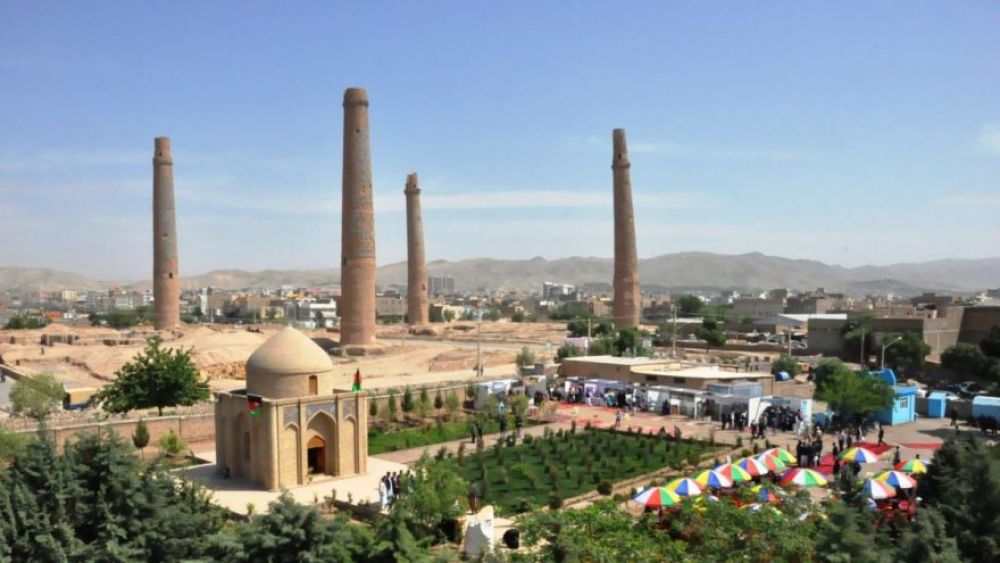

The Musalla Complex in Herat, Afghanistan, once stood as a remarkable testament to the city's historical significance and its golden age under the Timurid Empire. Founded in the early 15th century by Goharshad Begum, the wife of Timurid emperor Shah Rukh, the complex was a grand assembly of religious and educational structures including a madrasa, mosque, and mausoleum.
Its history of tourism, however, is marked by periods of splendor and subsequent neglect. The complex, known for its five towering minarets and the splendid Goharshad Mosque, was part of the Silk Road and attracted scholars, poets, and artists from across the Islamic world, contributing to Herat's reputation as a center of learning and culture during medieval times.
Unfortunately, many of the original buildings were destroyed by British forces in the 19th century as a punitive measure. What remained was further damaged by earthquakes and neglect, with the complex suffering significant destruction during civil conflicts in the late 20th century. Despite these challenges, the Musalla Complex's historical and cultural importance has made it an important site for preservation efforts.
Today, tourism at the Musalla Complex is minimal due to the security concerns and political instability in Afghanistan. Yet, the site still holds considerable attraction for historians, archaeologists, and those interested in Islamic architecture.
Excavations and preservation work have intermittently taken place when safety allows. International organizations have shown interest in the conservation of what remains of the Musalla Complex, recognizing its significance as part of the world's cultural heritage. Efforts by UNESCO and other preservation entities are ongoing to ensure that the site is protected and can one day be restored and reopened to the public.
In terms of modern tourism trends, there has been a shift towards virtual visits and educational content, providing remote access to the site for those who cannot visit in person. While this cannot replace the experience of being there, it serves to increase global awareness and appreciation of the Musalla Complex's legacy.
As the region seeks stability, there is hope that the Musalla Complex, along with other historic sites in Herat and Afghanistan, will once again become accessible to tourists and serve as a bridge connecting the rich heritage of Afghanistan to the world.